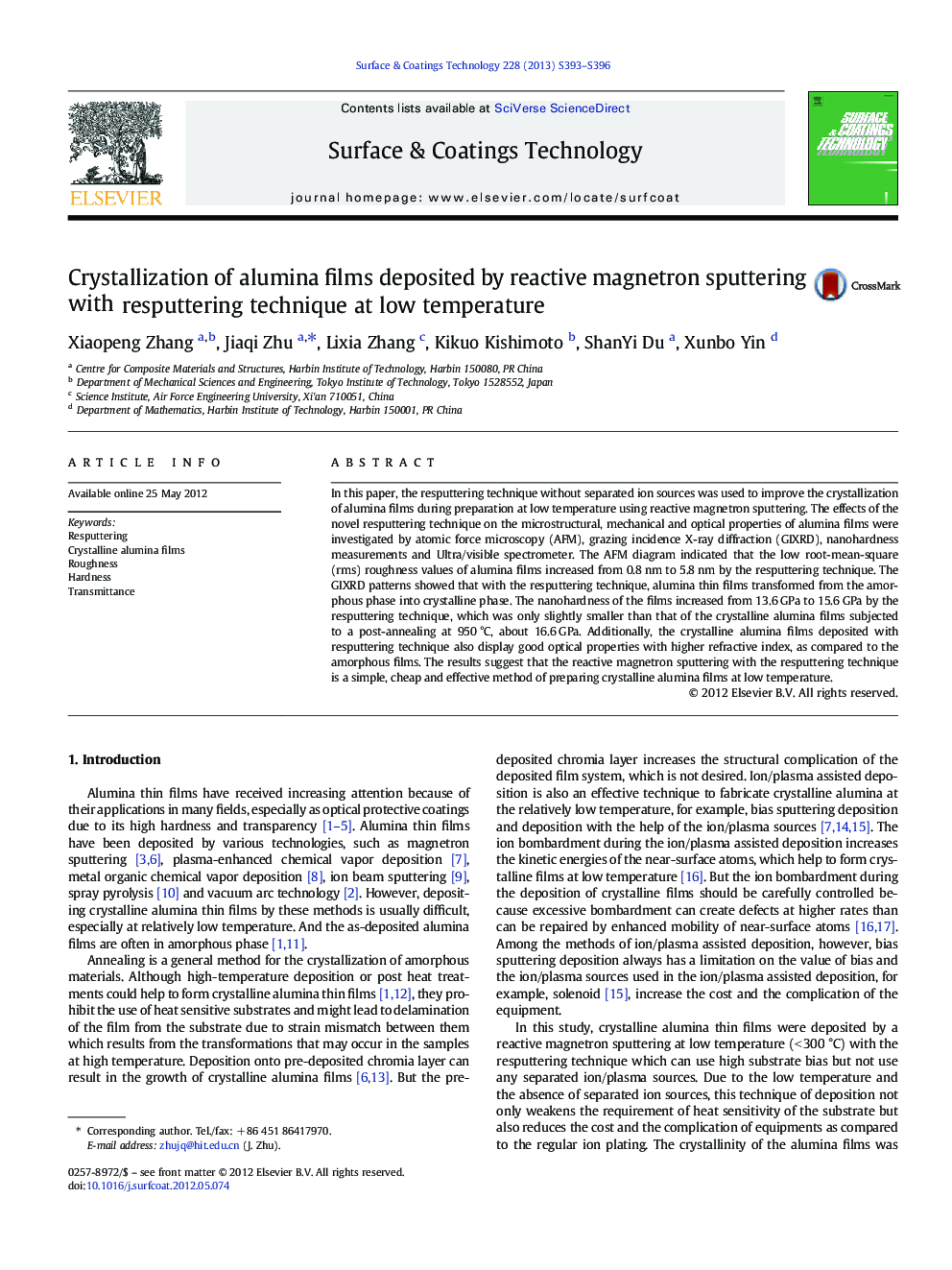| Article ID | Journal | Published Year | Pages | File Type |
|---|---|---|---|---|
| 1657865 | Surface and Coatings Technology | 2013 | 4 Pages |
In this paper, the resputtering technique without separated ion sources was used to improve the crystallization of alumina films during preparation at low temperature using reactive magnetron sputtering. The effects of the novel resputtering technique on the microstructural, mechanical and optical properties of alumina films were investigated by atomic force microscopy (AFM), grazing incidence X-ray diffraction (GIXRD), nanohardness measurements and Ultra/visible spectrometer. The AFM diagram indicated that the low root-mean-square (rms) roughness values of alumina films increased from 0.8 nm to 5.8 nm by the resputtering technique. The GIXRD patterns showed that with the resputtering technique, alumina thin films transformed from the amorphous phase into crystalline phase. The nanohardness of the films increased from 13.6 GPa to 15.6 GPa by the resputtering technique, which was only slightly smaller than that of the crystalline alumina films subjected to a post-annealing at 950 °C, about 16.6 GPa. Additionally, the crystalline alumina films deposited with resputtering technique also display good optical properties with higher refractive index, as compared to the amorphous films. The results suggest that the reactive magnetron sputtering with the resputtering technique is a simple, cheap and effective method of preparing crystalline alumina films at low temperature.
► The resputtering technique is able to improve the crystallization of alumina films. ► The resputtering technique increased the surface roughness of alumina films. ► The alumina films prepared with the resputtering technique beome harder. ► The alumina films prepared with the resputtering technique show good optical properties. ► The resputtering technique is a simple, low-cost and effective method.
